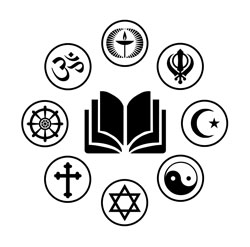The first Interfaith Fair will come to the University today, Wednesday, March 6 from 12:00 pm to 4:00 pm in Anacon Hall, located on the second floor of the Student Center.
The purpose of the Interfaith Fair is to give members of the University community an opportunity to learn more about different faiths around the world. Attendees are able to visit each table and learn about different faiths and faith experiences. Several groups from the University will be hosting tables including individual students highlighting faith experiences such as World Youth Day, Birthright Israel, and the “Diversity is…” project.
President Barack Obama placed an emphasis on the interfaith cooperation and community service during his inauguration. As a result, the University will be involved with Obama’s Interfaith and Community Service Campus Challenge.
According to Obama, the interfaith service involves people from different backgrounds, religious and non-religious coming together to tackle community challenges.
The community challenges range from homelessness to mentoring to the environment, all while building civility between diverse groups. An example Obama used was Protestants, Catholics, Hindus, Jews, Muslims and non-believers building a Habitat for Humanity house together. To do so, he is calling on all institutions of higher education, from community colleges to private four-year colleges, to solve our nation’s greatest challenges.
There are over 250 institutions in the first year of Obama’s Interfaith and Community Service Campus Challenge. The challenge is to help make the vision of interfaith cooperation a reality on campuses and communities across the country.
Melissa Boege, graduate assistant from the Office of Service Learning and Community Programs, became involved with the challenge as part of her graduate assistantship. Boege, Dr. Saliba Sarsar, director of the Interfaith and Community Service Campus Challenge at the University, Barbara Nitzberg, International Student Assistant Director, and Marilyn Ward, Director of Service Learning, have been coordinating and organizing the Interfaith Fair at the University.
Also helping to bring the challenge to the University are the work study students in Service Learning. Klaudia Szabat suggested having the fair to highlight different religions, faiths and cultures that make up the University. The office has been working to develop this idea since last semester.
Student organizations such as the Muslim Student Association, Hillel, Circle K, Latin American Student Association, South Asian Student Association and the Study Abroad Club will also be at the fair.
There will also be academic departments and campus offices such as the Catholic Campus Ministry and the Philosophy, Religion and Interdisciplinary Studies Department.
Community members and groups will host tables as well, such as the Monmouth Center for World Religions and Ethical Thought, Manasquan Quakers, Shrewsbury Monthly Meeting, Saint George Greek Orthodox Church and Jersey Shore Ba’hais.
“I think that diversity is something that every college and University should make an effort to focus on, and I think that Monmouth does a great job in offering programs and events that give members of the campus community an opportunity to increase their understanding of diversity and experience cultures and communities that may be different than their own,” said Boege.
“The Interfaith Fair, along with the President’s Interfaith and Community Service Campus Challenge at Monmouth as a whole, seeks to further diversity and understanding on campus by offering community members an opportunity to learn more about each other and celebrate our diversity,” Boege continued.
The University is made up of approximately 79 percent Caucasian students, four percent African American students, nine percent Hispanic or Latino students, three percent unknown ethnicity and two percent of students with two or more races, according to CollegeBoard.com.
Many students at the University have mixed feelings of diversity they see on the campus. Kelsey Flatley, freshman education and math major, believes that there is good amount of diversity at the University. “You meet all different kinds of people here and they are all of different backgrounds.”
However, Roksana Rahman, freshman biology major, believes that the University is not diverse in the slightest bit besides a few people here and there. Both girls agree that the University is filled with cliques, which make it difficult to learn about others and their backgrounds.
IMAGE TAKEN from http://interfaithscholar.org


